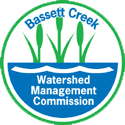Projects
Twin Lake In-Lake Alum Treatment
Golden Valley
Project Number: TW-2
Project Status | Active
In treatment evaluation phase .The BCWMC approved the treatment and project specifications at its March 2015 monthly meeting and authorized the City of Golden Valley to proceed. A contractor applied the in-lake alum treatment on Twin Lake on May 18 and 19, 2015. Water clarity data collected through secchi depth readings post-treatment indicates an improvement in clarity.
A second alum treatment was originally slated for 2018 or 2019, depending on water quality monitoring results. However, water monitoring in 2017 found that the successful at controlling internal phosphorus load and that it would not be beneficial to technical memo on the analyses and conclusion.)
be reconsidered after monitoring data
Project Funding | Not Grant Funded
The estimated cost of this project is $163,000 of which $20,800 will be funded by the BCWMC's Capital Improvement Project Closed Project Fund and up to $142,200 will be funded by the BCWMC's 2013 ad valorem tax levy collected via Hennepin County in 2014.
Project Description
The BCWMC, in cooperation with the City of Golden Valley, has conducted an in-lake aluminum sulfate treatment of Twin Lake to improve the lake's water quality. The application of aluminum sulfate will help reduce the growth of algae in the lake because the aluminum sulfate will bind with phosphorous that gets released by sediments in the lake.
Treating the lake with aluminum sulfate comprises injecting the alum into the lake several feet below the water's surface. The alum reacts with the water and becomes aluminum hydroxide and in this form, also known as floc, settles to the bottom of the lake. During the settling process, the aluminum hydroxide binds with phosphorous to form the compound aluminum phosphate, which is an insoluble compound. Aluminum phosphate cannot be used by algae for food, which results in less algae in the lake. Additionally, the floc forms a layer at the bottom of the lake and binds with phosphorous that is released from the lake's bottom sediments and over time, this process reduces the internal phosphorous loading of the lake.
The alum treatment is expected to maintain Twin Lake's water quality for 20 to 30 years or longer.
The Food and Drug Administration, the U.S. Environmental Protection Agency, and leading medical experts all concur that aluminum is not a risk factor for diseases or health conditions. There is no evidence to suggest that aluminum ingested in water poses a health threat. Water treatment plants in the United States use alum.
More Information
Technical Memo: Results from first treatment (June 2018)
Technical Specifications and Alum Factsheet: Alum Treatment; Technical Specifications (Approved March 2015)
BCWMC Resolution Ordering Project: Resolution 13-05 (September 19, 2013)
Feasibility Study: Water Quality Improvements in Twin Lake (BCWMC, February 2013)
Contact: BCWMC Administrator Laura Jester at laura.jester@keystonewaters.com or 952-270-1990.

